The spa retail business as we’ve known it is in the midst of significant change. Over the past two decades, we’ve watched technology like the internet and mobile phones transform customer behavior and whole industries have been disrupted. What do these changes look like for you specifically and what does it mean for your profitability?
Here’s a look into the three most prominent trends disrupting spa retail today. We will discuss these in a way that will both show you what to expect in the coming years and hopefully convince even the most heavy- footed businesses of the necessity to think—and act—differently. Your success depends on it.
Trend 1: Changing Competitive Landscape
Spa retail competition has come a long way. Where once there were just one or two dealers with physical showrooms in your local area, today there are physical and ecommerce threats around every corner and in every customer’s pocket. The fusion of physical and digital storefronts has made “omnichannel” an everyday word in business lingo and a reality in your competitive landscape. Online retailers and big box stores have not only entered the arena, they have taken the pole position as potential threats to specialty spa dealers’ sales. Technology has lowered the barriers to entry and allowed many more contenders, many of them well backed, easier access to the hot tub market.
The business model of big box stores allows them to undercut smaller retailers, especially those that don’t demonstrate a unique identity, specialized expertise, or high-quality line of products.
The business model of big box chains is based on large sales volumes in order to dominate market share. Big box stores often grow at the expense of locally owned independent businesses who are slow to adapt. The big boxes are well known for using predatory marketing strategies like loss leaders to take sales away and they intend to dominate the volume in every marketplace they enter. Walmart actually has a goal of at least 30% market share for its many major product lines, while Home Depot and Lowe’s together now have about half of home improvement sales.
With their massive advertising budgets, ability to squeeze suppliers on wholesale prices, and realized operational efficiencies, the big box stores are often able to undercut smaller retailers, especially those that don’t demonstrate a unique identity, specialized expertise, or high-quality line of products. According to Mazzone & Associates’ 2015 Retail Industry Report, the number of discount warehouses and supercenters increased at an average annual rate of 4.0% between 2011 and 2015. The report also forecasted that this segment would increase its share of the retail sector between 2015 and 2020, with revenue growing at an average annual rate of 2.1% to $512.0 billion.
And then there are the online retailers. Spa retailers who live and sell online today typically act as intermediaries between manufacturers and consumers without carrying any inventory. They can therefore offer larger product ranges unlimited by the cost of physical space. This includes those that market their products on 3rd party digital marketplaces like Amazon.com, Wayfair, Jet.com, and ebay. Amazon alone is all over the news and their performance disrupting most major retail industries speaks for itself.
As consumers become more accustomed to the convenience of online shopping, there is sure to be growing pressure in the industry for accessible pricing and more purchasing options.
Hot tub e-commerce, to date, has primarily involved off-shore, lower quality manufacturers rather than reputable US brands, allowing well-prepared specialty spa dealers to compete on product differentiation and quality rather than price. But as consumers have become more accustomed to the generally lower and visible prices plus convenience of online shopping, there is sure to be growing pressure in the industry for accessible pricing and more purchasing options.
As an example, just take a look at the pricing and options customers see when they search for hot tubs on Amazon.com:
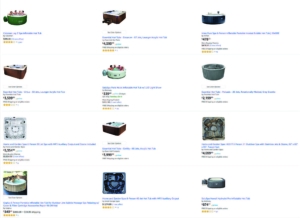
With increased local and digital competition, it will continue to be harder to attract customer attention. Specialty spa retailers must become experts in driving relevant store traffic and converting that traffic to sales at a higher rate. Evolving tech offers the specialty retailer greater opportunity to reach consumers with engaging communication and interactive experiences, but what really matters is your message. You must present a strong unique value proposition and inspire trust. Just shouting that you offer product and mentioning a few of the features doesn’t cut it anymore. The retailer of tomorrow must embrace a customer-centric strategy to compete. Specifically, you must add value where online and big box stores can’t: on the showroom floor and in your customer service.
Trend 2: Changing Path to Purchase
The buyer’s journey is the process consumers go through from the moment they realize they have a want or need to the moment they make a purchase to serve that want or need. In the past, if someone wanted a hot tub, they would look up hot tubs in the phone book and hop in the car to drive to the local hot tub store. Once there, they’d be approached by a salesperson who would immediately hit them with a sales pitch. The customer would either leave the store empty-handed or be convinced and leave with a lighter checkbook and a spa.
Spa retailers today must adjust their strategy to meet the customer where they are on their buyer’s journey in order to survive.
Today, a buyer’s path to purchase is a bit more complex. It usually starts well before heading to a dealer for information. Studies show that 72% of buyers turn to Google during early stage research when they become aware of a problem or need they have. Once they have identified a few solutions to their problems, they continue their online research efforts, often using social media or reviews platforms, to learn from others who have tried the same solution. Once they have identified and considered their options, they typically decided to visit a store to learn firsthand about specific product features and benefits.
With increased access to information, customers generally visit dealer showrooms further along in their path to purchase. In other words, when they get to the showroom, they’re looking for more than just product details and online reviews they can get from the internet. At this point, customers want to find out how one of your hot tubs is going to specifically address their unique problem, need, and/or circumstances in a hands-on way and why they should buy from you. Test spas are a must and interactive product displays will make it easier for customers to truly get an idea of the spa experience before they buy.
A well-timed and well-planned approach based on mutual understanding and trust is more likely to attract, engage, and move a customer forward on their path to purchase.
Again, spa retailers today must adjust their strategy to meet the customer where they are on their buyer’s journey in order to survive. Most obviously, every spa business must have an online presence to even appear on the radar alongside online sellers when consumers start their buyer’s journey. Perhaps more importantly, dealers must provide a showroom experience that also communicates effectively with the consumer. Similar to the web, consumers look for a face-to-face experience that is not necessarily selling, but showing concern and a desire to help.
Simply put, a well-timed and well-planned approach based on mutual understanding and trust is more likely to attract, engage, and move a customer forward on their path to purchase.
Trend 3: Changing Customer Expectations and Behaviors
While technology has made instant access to information and the overall shopping experience a reality for consumers, it’s also shifted customer expectations. Even though the majority of hot tubs haven’t changed much in the last 20 or 30 years, customers expect that they have, and they want you to show them truly unique product innovations. This is the next great and necessary leap for the industry.
In addition to a technologically advanced product, it makes sense that today’s customer expects a unique and engaging experience once they enter a dealer’s showroom. This experience must be modern enough to include technology in the presentation but must be grounded in great salespeople offering incredible customer service. Since choice abounds, it’s no longer enough to satisfy customers—a retailer must absolutely delight them.
Today’s customer expects a unique and engaging experience once they enter a dealer’s showroom.
In fact, according to Walker’s Customers 2020 study, customer experience will overtake price and product as the key brand differentiator by the year 2020. Synchrony Financial reports that over 50% of shoppers say they would pay a higher price for the customer experiences they value most, and 77% of shoppers would be more loyal to stores that provide their personal top three customer experiences.
With a growing dependence on the internet and the devices that support it, customers have also come to expect do-it-yourself experiences. The ability to find what they need when they need it has lead to a sense of empowerment where consumers appreciate being in charge of their own exploratory experience. Zendesk research found that 50% of customers think it’s important to solve product or service issues themselves. In the showroom, this kind of consumer-driven, interactive approach also serves to avoid what consumers commonly view as pushy person-to-person sales tactics.
Accelerated innovation has also fueled the expectation of responsiveness in terms of immediacy and understanding. This means getting customer questions answered when they’re asking them in a proactive or anticipatory way, not just on the web but on your showroom floor. A 2014 Forrester Research study concluded:
“The ability to deliver personalized customer experiences and contextual, unique offers is essential to retaining and converting customers to brand advocates. But the expectations of empowered, connected consumers make this easier said than done. They have instantaneous access to information across multiple devices and want to interact with brands on their terms — across channels and whenever they want.”
Essentially, today’s customer is attracted to timely interaction that builds trust, tells a story, and presents product solutions in a consistent yet personalized way.
Essentially, today’s customer is attracted to timely interaction that builds trust, tells a story, and presents product solutions in a consistent yet personalized way.
How can hot tub retailers succeed in this trending business environment?
Respond to the trends and realize your key differentiator is YOU. In other words, recognize the importance of providing something of value the competition doesn’t: a personal touch and strong value proposition in your marketing, prompt follow up from an empathetic salesperson, and a showroom experience that absolutely delights. By optimizing touchpoints between your store, its products, and your customers, you can absolutely win in the new world of spa retail.
Keys to success: A personal touch and strong value proposition in your marketing, prompt follow up from an empathetic salesperson, and a showroom experience that absolutely delights.
These are five steps your dealership can take to effectively address the trends challenging our industry today.
1. Make it all about the shopping experience.
The term “experiential” is getting applied to brick-and-mortar retail quite a bit these days. What it means is that it’s no longer good enough to just have a clean floor and stocked shelves. There’s no tolerance for a substandard shopping experience today. You must provide a “wow factor” of some kind in your store. There’s simply no reason for shoppers to leave the internet otherwise.
Think about your business, especially your retail store, in terms of the whole experience. From the moment your store comes into view as the shopper pulls up in their car, what are they experiencing?
- Is your sign professional, visible, and well branded?
- Is your parking easy?
- Is your storefront clean and vibrant? Does it offer a welcoming feel? Does it enhance your brand?
- Is your store decorated with a clean modern look, including modern color scheme, decor accents, modern lighting, new furnishings and bright displays?
- Is the brand experience inside your store consistent with your website, your signage, your advertising?
- Do you offer something truly unique to do while in your store? Test spas in private themed environments? VR experiences? Interactive product displays? Videos? Kids play areas?
- Is your store a warm and comfortable place to spend some time?
If you can’t answer “Yes” to these questions, you’re most likely losing business to competitors or other product categories, industries, and interests that provide better experiences.
In addition to the displays, product demos, and hi-tech experiences you provide in your store, it’s important to make the interpersonal part of the shopping experience pain-free. Customers already dread walking through the doors into the waiting jaws of a sales shark. Welcome them with a smile and give them some time to breathe.
If in their first interaction there’s the least bit of suspicion that it may be painful, they may not stay and won’t come back.
For example, a warm “Welcome to Carole’s Spas” as the customer enters is a great way to greet shoppers. Let them know you’re there without the pressure of a demanding and possibly ridiculous question on them. Everybody knows if customers walk through the doors and don’t go right to the chemicals, they are there to shop for a spa. Make your conversation to the point, friendly, and helpful. If in their first interaction there’s the least bit of suspicion that it may be painful, they may not stay and won’t come back.
However, if you’re able to create a positive and comfortable shopping experience you can gain the trust of your shoppers, even skittish Gen Xers and millennials.
How can you take the challenge on and turn it into opportunity? Good customer experiences in any retail environment start with engaged employees. In fact, Pacific Consulting Group conducted a study which shows employees who are engaged in defining or creating the customer experience produce a better customer experience (CX). The study identified engagement as consisting of four elements: self-motivation, ability, support, and knowledge.
Self-Motivation
Employees must want to provide a great customer experience. In the PCG study, 83% of self-motivated employees put the customer first ahead of business concerns, and 82% genuinely enjoy customer interactions.
Ability
Employees say their ability to deliver great customer experience increases when they aren’t restricted by ‘cost-cutting’ and budgetary limitations. Of those who consistently provide a good customer experience, 62% never feel limited by budgets or schedules when it comes to customer experience.
Support
When employees feel supported by management, they are more motivated to deliver a quality customer experience. Of the employees who, according to PCG, are top CX performers, 87% say they receive active encouragement from their managers.
Knowledge
Employees who know and understand the business’s customer experience vision tend to deliver better customer experience. In fact, 78% of employees at top CX companies say they have a clear understanding of the employers’ CX strategy.
In a nutshell, creating a great customer experience means making sure you have a clear CX strategy that your employees understand. It means providing the opportunity, and supporting their efforts without budgetary restrictions, to deliver quality customer experiences.
2. Incorporate more technology into business processes.
This entire trend may be summed up by a reference to every sci-fi movie you’ve ever seen. Do you want to be the one that has to fight the robots of the future?
In most major markets, those spa retailers who are taking advantage of technology for marketing and operational efficiency are beginning to pull away from more traditional low-tech competitors. Here are some areas to watch.
Web
A web presence is critical today. Your website must look clean and professional across a variety of screen sizes, incorporating responsive design. It should also be working for your business behind the scenes, helping you get found online. This means SEO efforts should include content marketing through blogging, off-page link building and citation efforts, and strategic use of semantic markup and meta data.
It’s as simple as “they ask, you answer.”
Most of your website content should focus on teaching about hot tubs rather than selling, answering all customers’ most frequent and important questions. As pool industry veteran turned marketing guru, Marcus Sheridan, puts it: It’s as simple as “they ask, you answer.” Be sure to include a great FAQ page, then expand on these answers with longer blog articles. FYI, this practice supports the SEO efforts mentioned above better than any other single strategy.
Your website should generate leads. If you don’t have a way for customers to input their information so you can contact them, you are falling behind. That means offering something as simple as an informational guide, price quote, or backyard consultation.
Apps
Apps are really simple. They are little programs that do one or more specific things. Spa dealers can declare war on paperwork and take advantage of apps for advertising, operations, accounting, and specific service functions.
Apps like Perch, Facebook’s Page Manager, and Hootsuite are great for social media monitoring and marketing. Hubspot, Mail Chimp, Yodle, and many others offer email and marketing automation. Canva is great for simple graphic design so you can put together your own ads and social promotional material. Gusto is great for HR/Payroll and Freshbooks is a really effective app for keeping your books. Square and several others offer mobile payment and credit card processing solutions. Companies like Evosus, DBX Software, RB Control Systems, and Wise Software all offer more specific solutions for spa business operations.
Use of apps across all areas is proving to increase efficiency, support accuracy, and improve communication in many spa businesses today.
Online Listings
Making sure your business appears in search results starts with the basics of online listings. These are free places to list your business directly tied to SEO efforts. Listings include Google My Business, Bing Local, Yahoo, Yelp, YP.com, and all the others found at Moz.com/local. Other social network sites like Houzz, Facebook, Linkedin, and Pinterest also offer listing options and help your business get found. Again, they’re free, so not why put your business out there?
Voice Search and Chat Bot Discovery
Most spa dealers are probably not thinking about AI (artificial intelligence) and IoT (internet of things) much. But it’s coming to retail faster than you might expect. Have you seen products like Amazon’s Echo or Google Home in action? Combine these with Siri, Alexa, and other voice-activated assistants and you can begin to imagine the relevance. Soon people will be getting most of their information not by typing in questions or keywords, but by simply asking for it. Voice-activated devices are helping people connect with their homes, appliances, cars, stores, and other people to do just about everything in daily life.
Phrase your Q&A information in the way that someone would ask for it in normal casual speech and have your SEO agency implement semantic markup to take advantage of voice queries.
Spa retailers can take advantage of this surge in voice search by making your website’s voice friendly. Your FAQ page is a huge opportunity here: Phrase your Q&A information in the way that someone would ask for it in normal casual speech and implement semantic markup to take advantage of voice queries. A good SEO agency can do this for you.
In addition to voice search, chat bots and shopping bots are surging in popularity and usefulness. A chat bot on your website basically answers questions about your business without forcing a web user to navigate all over your website. A shopping bot is something other businesses use to crawl your site and locate information about your products for their searchers.
Spa stores can think about using a bot to help customers, but a more effective and realistic short-term goal is to make your website information really good, make it really clear, and always use semantic markup and clear meta data to show other bots (Amazon, Google, etc.) exactly where to find the best info about you and your product.
If these opportunities sound too complex, get a quality SEO agency to start working for you. It won’t take long before you’re way out ahead of the competition.
3. Improve employee retention.
With unemployment hovering around 4%, it will be increasingly difficult to keep your best people. You simply must incentivize your staff to stay. It’s the reality of today’s labor market.
Not all of the incentive opportunities you have to offer need to be financial. Many small businesses are revolutionizing the way people work with flexible schedules, the opportunity to work remotely where possible, profit sharing, or even ownership potential for your best people.
Helping employees plan to get where they want to go in their career is your best opportunity to foster a fulfilling and productive relationship while building loyalty.
Then there’s workplace culture that can work to an employer’s advantage. Russ Laraway, a former manager at Google and Twitter, emphasizes what he calls “radical candor” in how you talk around the workplace. This basically means be open, honest, and direct, never mean, but really direct. If you build this kind of positive environment, everybody will understand where they stand and where you stand. Your employees are much more likely to be inspired to make improvements when they feel completely comfortable. They become better employees, you become a better manager, and your workplace becomes a place people will want to stay.
According to Laraway, perhaps one of the most important things you can do to keep great people around longer is to share in their career planning. Sound counterintuitive? Actually, helping employees plan to get where they want to go in their career is your best opportunity to foster a fulfilling and productive relationship while building loyalty. Think big picture and provide opportunities for employees to learn and grow. There are simply too many great jobs out there for you not to be one of them.
4. Up your digital marketing game.
Even though some reports show it to be on the decline, search advertising (PPC) continues to be an effective form of digital advertising. You simply must have a reasonable budget set aside for Google Adwords and Bing Ads pay-per-click ads. Target searchers in your area only and use compelling offers that create urgency. It’s wise to have your digital ads managed by an expert who can show you regular reporting of each ad’s effectiveness.
Target searchers in your area only and use compelling offers that create urgency.
In addition to the requisite search marketing you need to be doing, social media advertising (not the free stuff you post to your page or profile) has come on really strong. For years we’ve been learning that social media is not like other advertising media. It’s not. With TV, radio, or print, attention comes via entertainment and we sneak an ad in there. With social media, you have to actually get people to like you and your products. And if you’re doing it right, they will like you.
Most importantly, even if only a small number like your business page, you can target their friends as well as other people in your area by what they already like. You might show ads to friends of current customers, to those in your area who like landscaping, or to those who have visited your website. Yes, all these targeting options exist. If you’re not actively promoting to those in your area who like your product category, those who like your page, and their friends on Facebook and other social platforms, you’re missing a real opportunity.
5. Focus on Gen X and older millennials for their buying power.
It’s no secret that for nearly the entire existence of the product category, hot tubs have been sold primarily to Baby Boomers. While this aging generation remains a strong buyer of spas, the youngest boomers today are in their mid 50s. The upper end of this demographic are unfortunately reaching the end of their lives. While not as large as the Boomer generation, Generation Xers (age 34 to 55) are in the prime of their careers and their buying power. If you aren’t appealing to Generation X today, and even the older end of the millennial generation, you must adapt.
Although they were born before the internet, Gen Xers today insist on technology in everything they buy. Cars need to be connected, homes need to be smart, and smartphone integration is a way of life. What technology are you offering in your products that will keep this generation happy?
If you’re not selling brands with a strong and unique story, as well as creating a strong brand of your own, you simply won’t be able to appeal to this audience.
One additional idiosyncrasy of Gen X is that they appreciate strong branding. These individuals grew up in the 80s and reached adulthood in the 90s, eras where brand was everything. Nike, Apple, and countless fashion brands became ubiquitous during this era. If you’re not selling brands with a strong and unique story, as well as creating a strong brand of your own, you simply won’t be able to appeal to this audience. These buyers are looking for smarter spas that offer more personalization and better efficiency. Without an identity and products to back it up you’ll be left in the cold as customers get their warm water experiences elsewhere.




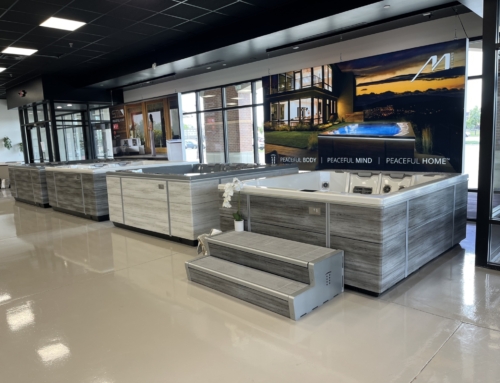
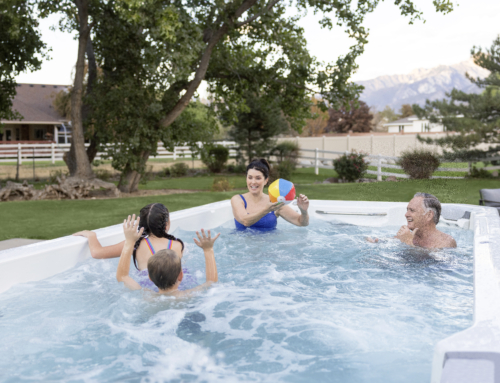
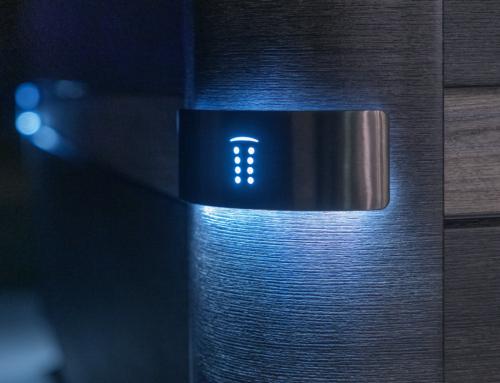
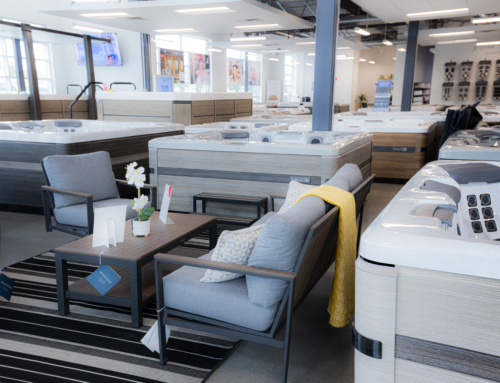
Leave A Comment